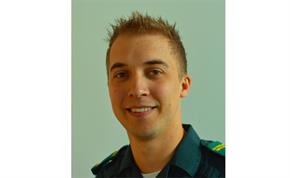
Cardiac arrests are arguably the most stressful jobs we have to attend. As part of our cardiac arrest care month, Area Clinical Lead Ash Richardson gives us an honest and poignant insight into an arrest he recently attended, and what he felt could have gone better.
Having worked within EEAST in a number of roles, including operational clinical care, education and clinical leadership, I have taken time to reflect on the management of cardiac arrests – the EEAST experience.
I was recently driving to Haverhill in Cambridgeshire for a meeting; whilst running late for the meeting, my Airwave radio alarmed and I was tasked to a cardiac arrest in a small village. Arriving first on scene (within five minutes), I found myself presented with a young female in cardiac arrest, found by their mother.
Resuscitation was commenced, control was updated, and I asked mum to assist me whilst I awaited assistance from colleagues. I soon found myself surrounded by colleagues in green, with two ambulances (each with a third person on) and a duty locality officer.
I consider myself an experienced paramedic and leader, with critical care capabilities and a teacher of ‘all things resuscitation’ (both internal and externally to EEAST). The patient received a suitably aggressive resuscitation and we ensured that everything was done for her, though it struck me during the time and in the subsequent debrief that whilst everything was done for the patient, the job at times lacked some structure and leadership.
There are always a number of factors that contribute to any given situation. In this case, I as first clinician on scene was tasked unexpectedly to the incident (already running late for something else). There was a total of eight ‘green’ people on scene that included myself, an experienced and respected DLO and others being mentored and supported. It is fair to say, a simple process of resuscitation became more complex purely by the number of people involved.
We were fortunate to have the opportunity to debrief; we were all happy with the resuscitation attempt but agreed that team leadership changed a number of times throughout the incident. This in itself is not an issue - actually it should be expected depending on the clinical capabilities of those on scene, but we all felt that a ‘checklist’ would have been a useful tool in the overall management and leadership of the cardiac arrest.
As it happens, the Trust now has an updated and modified cardiac arrest checklist, being launched as part of our ‘standard of care’ used within all cardiac arrests. Hopefully most of you will have seen this by now even if you haven’t used it in practice yet. I’d encourage you all to take a look when you can – it can really provide support in these high stress, and high tempo, situations.
Ash Richardson
Area Clinical Lead and Resuscitation Council (UK) Instructor
Published 24th November, 2016